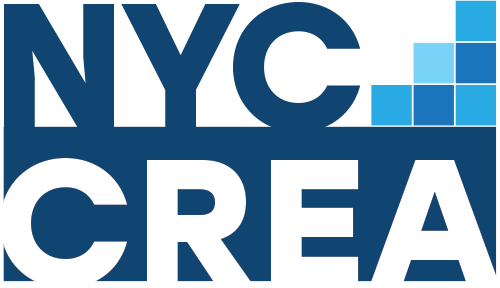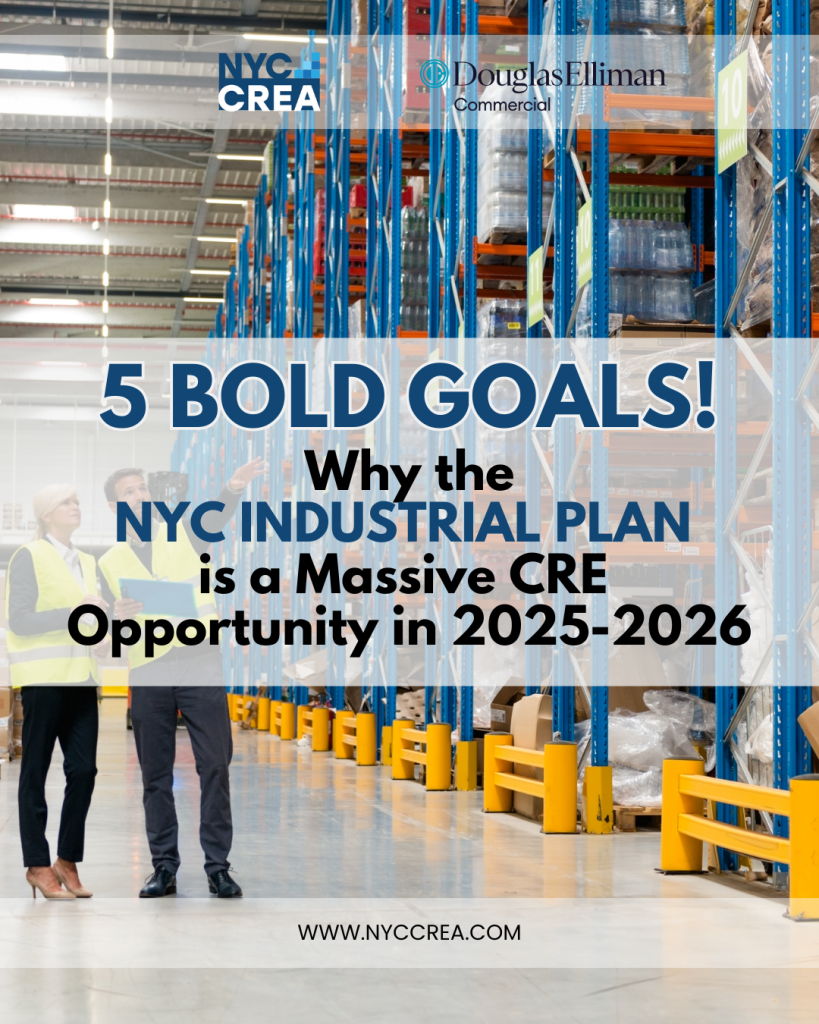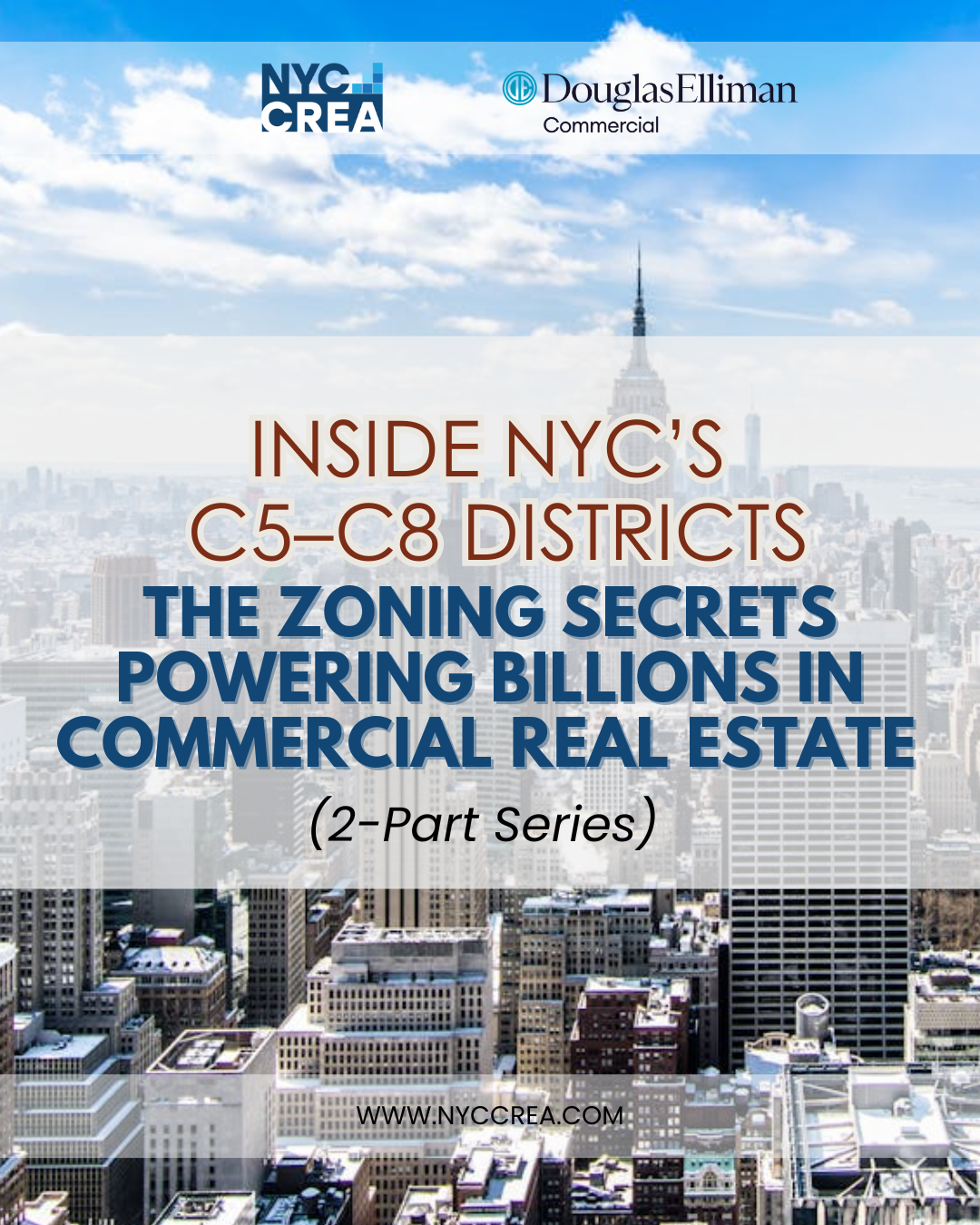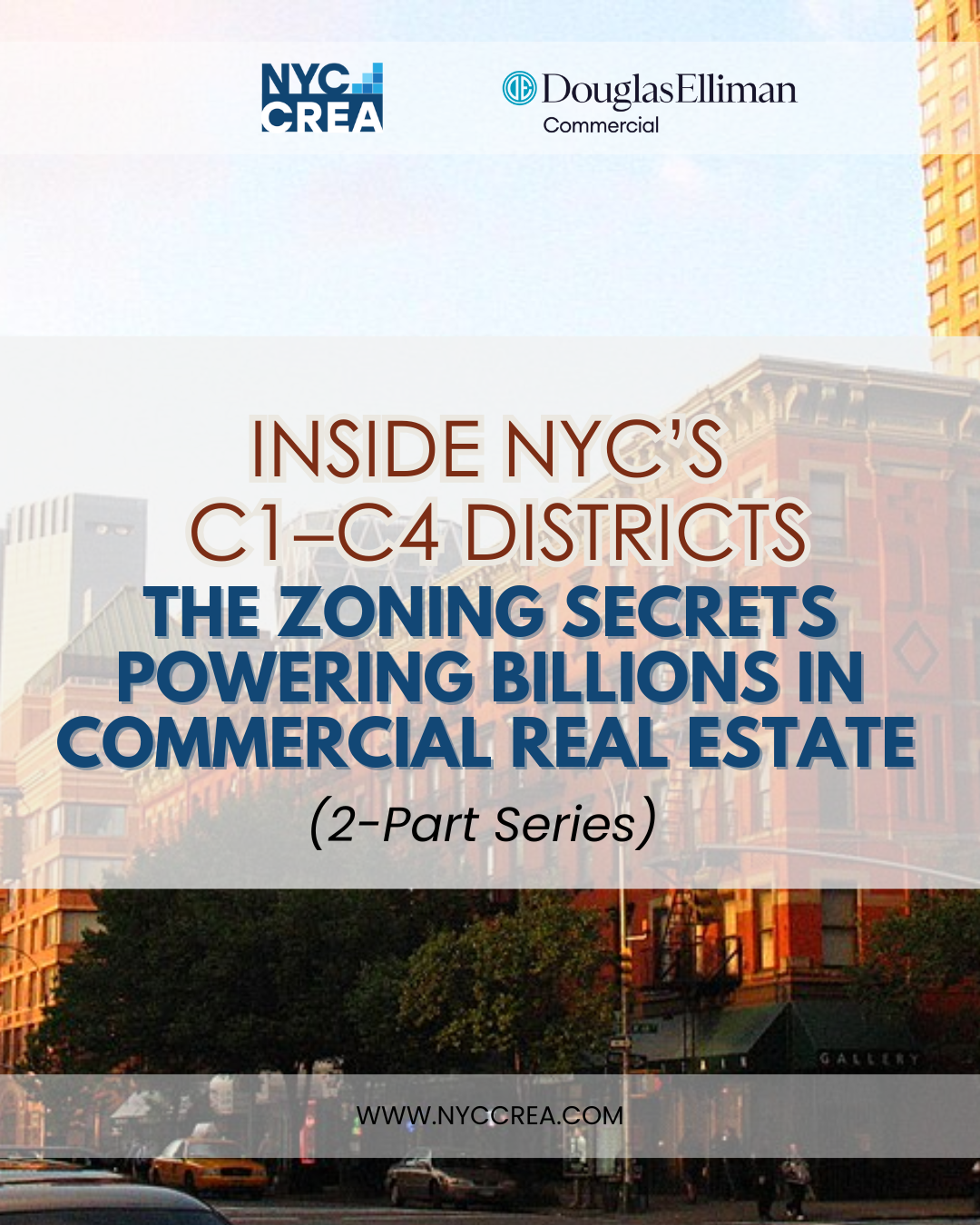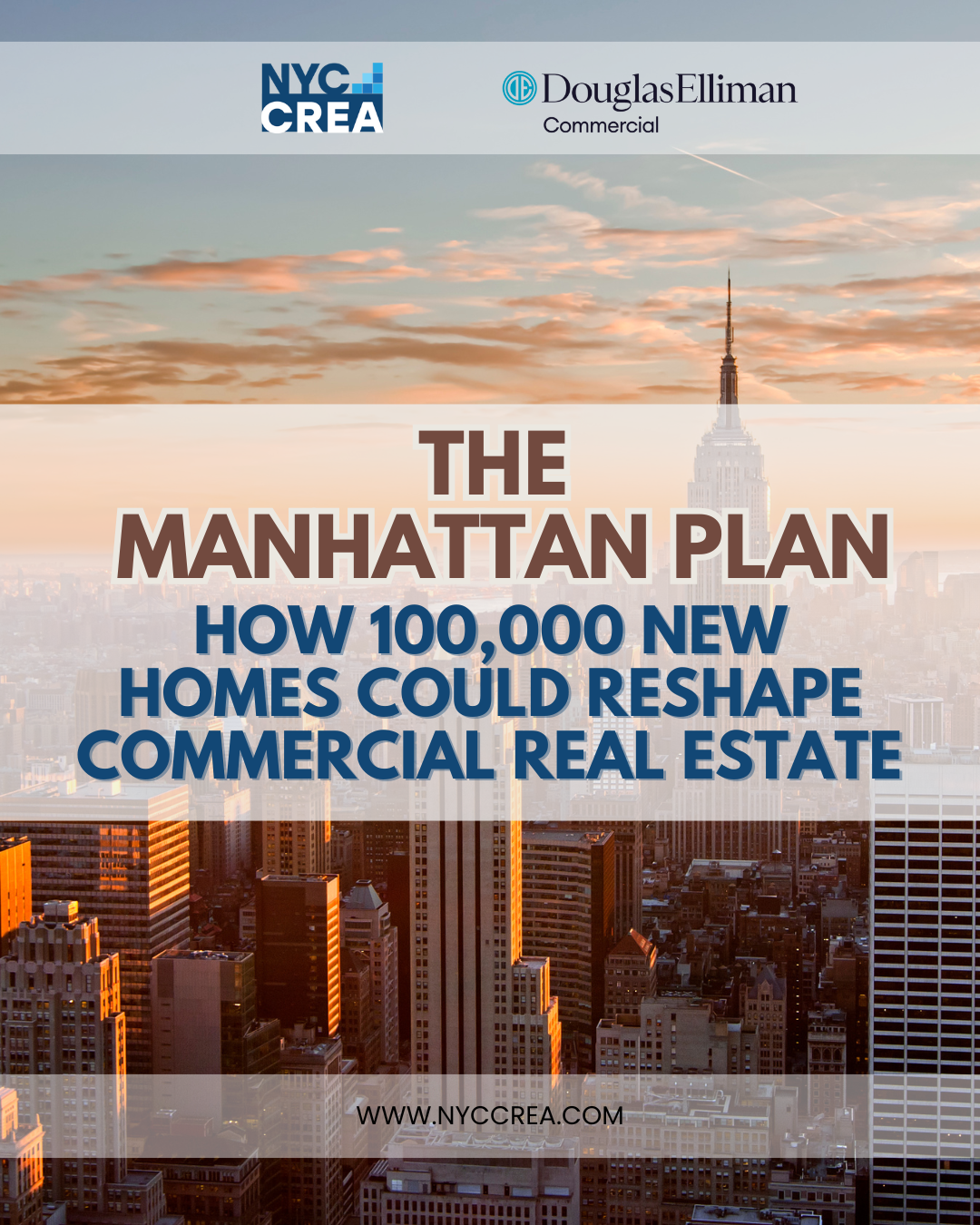September 17, 2025
Highlights at a Glance
- 545,000+ jobs across 47,000 industrial businesses are the backbone of NYC’s economy—and the Industrial Plan strengthens this foundation.
- A five-goal strategy with 73 actionable ideas aims to modernize, green, and expand NYC’s industrial real estate.
- With final adoption by end of 2025, the Plan sets the stage for a new era of industrial investment, freight efficiency, and climate resiliency.
A New Chapter for NYC’s Industrial Future
At the New York City Commercial Real Estate Advisors (NYCCREA), we see firsthand how the industrial sector fuels not just the city’s economy but also the demand for commercial real estate. A century ago, manufacturing built our skyline. Today, industrial uses—ranging from warehousing and logistics to construction, media production, and utilities—still employ 545,000 workers across 47,000 businesses.
Local Law 172 of 2023 gave birth to the NYC Industrial Plan, led by the Department of City Planning, City Economic Development Corporation, and the Department of Small Business Services. Development began in December 2023, culminating in an in-depth draft released on July 1, 2025 after 18 months of site visits, surveys, and engagement with hundreds of businesses, residents, and civic groups.
The process continues with borough-wide town halls in fall 2025, before the final plan is unveiled at year’s end. The result will be the city’s most comprehensive framework yet to strengthen industrial land, support business growth, and prepare for climate threats—laying the foundation for opportunity in 2026 and beyond.

Goal 1: Enable Industrial Businesses to Evolve, Innovate, and Go Green
- Cutting Red Tape: Streamlined regulations and optimized Small Business Services supports will reduce burdens on industrial businesses.
- Green Transition: From battery storage to district thermal heating, industrial areas will be activated for clean energy.
- Workforce & Inclusion: Expanded Minority- and Women-owned Business Enterprises support, workforce development, and technical assistance ensure an equitable transition.
Goal 2: Advance a Balanced Land Use and Real Estate Strategy
- Primary Industrial Areas: A new classification will reinforce zoning protections and catalyze growth in high-connectivity locations.
- Unlocking Development: Studies on parking/loading requirements and discretionary processes will clear barriers to new industrial construction.
- Catalyzing Investment: Streamlined processes will make it easier to transform unbuilt sites into active industrial hubs.

Goal 3: Support Modern and Efficient Freight Movements
- Blue Highways & Rail Freight: Investments in waterways and rail reduce truck dependency, cutting congestion and emissions.
- Micromobility Expansion: Cargo e-bikes and micro-distribution centers make last-mile delivery faster and cleaner.
- Truck Route Modernization: Enhanced signage, overnight parking pilots, and redesigned truck routes improve efficiency citywide.

Goal 4: Promote Clean and Safe Industrial Areas
- Design Enhancements: New toolkits will improve zoning design standards, making industrial areas more attractive and functional.
- Public Realm Investments: Partnerships with local organizations will improve sanitation, safety, and community connections.
- Environmental Stewardship: From brownfield cleanup to Superfund remediation, NYC is prioritizing safety and sustainability.
Goal 5: Prepare Industrial Areas for Climate Threats
- Flood Protection: Coastal resiliency projects and updated zoning standards protect waterfront industrial sites.
- Stormwater Management: Green infrastructure and resiliency guidelines safeguard critical infrastructure.
- Urban Cooling: Cool/green roofs and expanded tree planting mitigate heat while improving sustainability.

What This Means for CRE in 2025 and Beyond
As brokers, we recognize the NYC Industrial Plan as more than policy—it’s a market signal. With 73 strategies mapped across five goals, the plan expands the role of industrial real estate in logistics, green energy, and modern manufacturing.
For investors, the designation of Primary Industrial Areas promises stability and long-term value. For tenants, streamlined regulations and freight improvements make NYC’s industrial ecosystem more competitive. And for the city as a whole, climate resiliency investments ensure industrial properties remain viable assets in the decades to come.
In short, the NYC Industrial Plan unlocks the next wave of opportunity in commercial real estate—modern, green, and future-proof.
For the latest news, proven strategies, and exclusive opportunities in commercial real estate in New York City and Western Nassau County NY, visit us at www.nyccrea.com
FOLLOW US:
Facebook: www.facebook.com/newyorkcityCREA
Instagram: www.instagram.com/nyccrea
LinkedIn: www.linkedin.com/company/nyccrea
Reference:
NYC Industrial Plan Draft Report, September 2025
